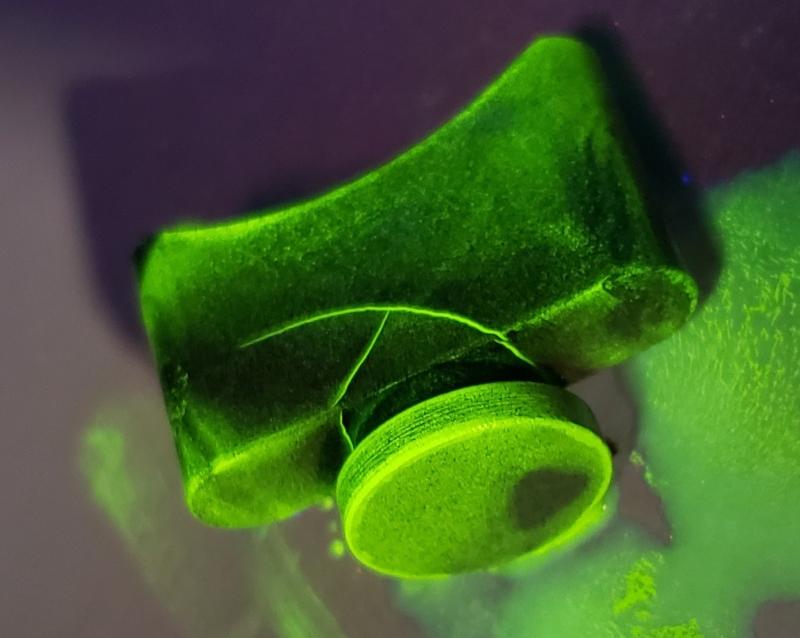
RNDT’s Magnetic Particle Testing equipment consists of Magnaflux 6000 amp bench units with 8′ head stocks, portable power packs, yokes, prods, black lights and all required accessories provide the foundation for RNDT to provide quality MT visible and fluorescent, wet and dry examinations in both the lab and field.
Magnetic particle testing is done by inducing a magnetic field in a ferro-magnetic material and dusting the surface with iron particles (either dry or suspended in a liquid). Surface imperfections will allow the magnetic field to leak out of the part, distort the magnetic field and concentrate the iron particles near imperfections, thus indicating their presence.
Magnetic Particle Testing, or Magnaflux as it is sometimes called, uses magnetic leakage fields to detect surface and subsurface cracks and discontinuities.
Have a question?
Talk to an RNDT Level III inspector for free.
Call 1-800-505-7638 today!
Magnetic particle testing (MPT) is a non-destructive testing (NDT) process for detecting surface and subsurface discontinuities in ferrous materials. The process puts a magnetic field into the part. The piece can be magnetized by direct or indirect magnetization. Direct magnetization occurs when the electrical current passes through the test object and a magnetic field is formed in the material. Indirect magnetization occurs when a magnetic field is applied from an outside source. The magnetic lines of force are perpendicular to the direction of the electrical current which may be either alternating current (AC) or some form of direct current (DC) (rectified AC).
The presence of a surface or subsurface discontinuity in the material allows the magnetic flux to leak. Ferrous iron particles are applied to the part. The particles may be dry or in a wet suspension. If an area of flux leakage is present the particles will be attracted to this area. The particles will build up at the area of leakage and form what is known as an indication. The indication can then be evaluated to determine what it is, what may have caused it, and what action should be taken if any.
